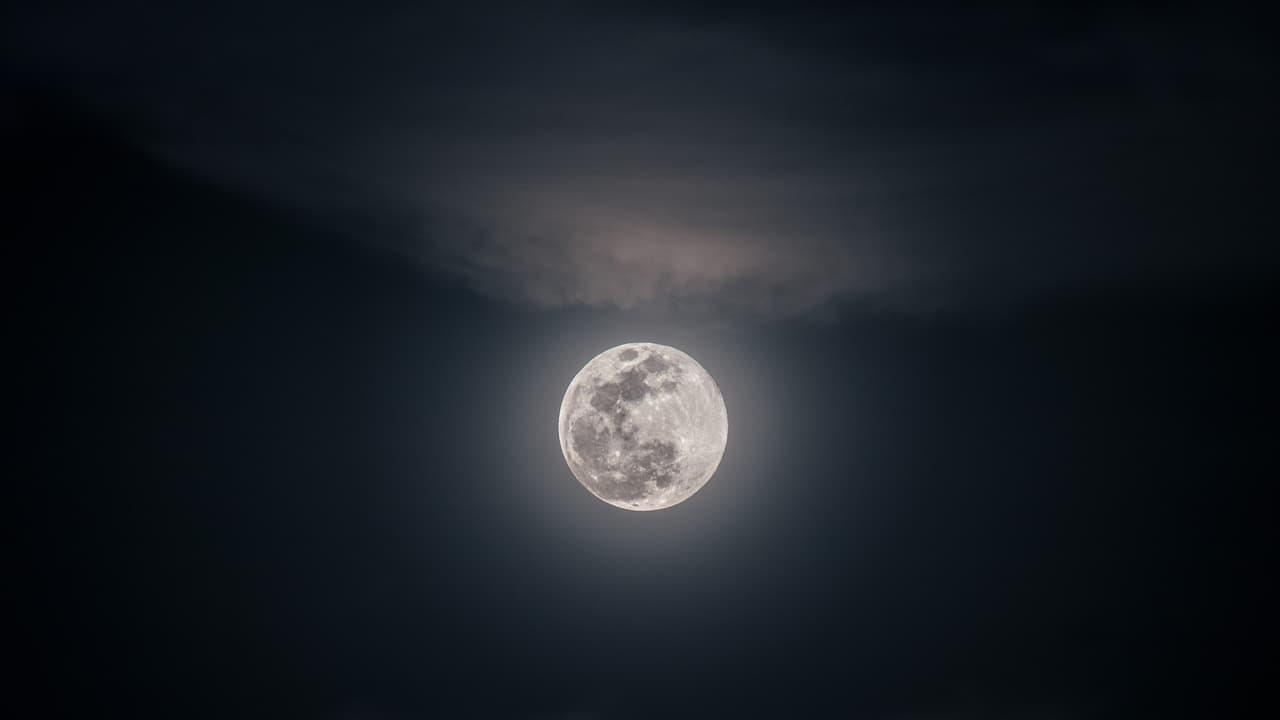
Mystery Solved: How The Moon Lost Its Magnetism, MIT Scientists Decode
For decades, scientists have been puzzled by a strange phenomenon: while lunar rocks show evidence of strong magnetism, the moon itself has no active magnetic field today. Now, researchers at MIT may have solved the mystery, suggesting that a combination of a weak ancient magnetic field and a massive asteroid impact briefly created a strong magnetic field on the moon's far side.
The Study and Its Findings The study, published in Science Advances, shows through detailed simulations that a large impact could have generated a cloud of ionized particles, or plasma, that enveloped the moon temporarily. This plasma would stream around the moon and concentrate on the side opposite the impact, where it could interact with the moon's weak magnetic field and briefly amplify it. Rocks in the area could then record this short-lived magnetic spike.
"This combination of events could explain the presence of highly magnetic rocks detected in a region near the south pole, on the moon's far side," the researchers wrote. The team suspects that the impact forming the Imbrium basin, one of the largest on the near side of the moon, may have triggered such a plasma cloud.
Expert Insights "There are large parts of lunar magnetism that are still unexplained," says lead author Isaac Narrett, a graduate student in MIT's Department of Earth, Atmospheric and Planetary Sciences. "But the majority of the strong magnetic fields that are measured by orbiting spacecraft can be explained by this process - especially on the far side of the moon."
Narrett's co-authors include Rona Oran and Benjamin Weiss at MIT, along with Katarina Miljkovic at Curtin University, Yuxi Chen and Gábor Tóth at the University of Michigan, and Elias Mansbach at Cambridge University. Nuno Loureiro, MIT professor of nuclear science and engineering, also contributed insights.
How the Moon May Have Become Magnetized Scientists have long known that the moon contains remnants of a magnetic field. Surface samples brought back by NASA's Apollo missions, along with global measurements from orbiting spacecraft, show evidence of magnetized rocks, especially on the far side.
Traditionally, such magnetism was attributed to a global magnetic field generated by a“dynamo” inside the moon's core, similar to Earth's magnetic field. But the moon's small core could only have produced a weak field, insufficient to explain the highly magnetized rocks observed.
Previous hypotheses considered whether a giant impact could amplify a solar magnetic field. Those studies suggested it was unlikely. But MIT's team took a fresh approach, assuming the moon once had its own weak dynamo field, about 50 times weaker than Earth's today.
Simulations of a large asteroid impact - like the one that created the Imbrium basin - showed that plasma released from the impact would concentrate on the far side of the moon, briefly amplifying the magnetic field there.
A Spike and a Jitter The team found that the impact's shockwaves would also travel through the moon, jostling rocks at the far side. This“jittering” would disturb electrons in the rocks, which would then realign with the temporarily amplified magnetic field, preserving evidence of the spike.
"It's as if you throw a 52-card deck in the air, in a magnetic field, and each card has a compass needle," Weiss explains. "When the cards settle back to the ground, they do so in a new orientation. That's essentially the magnetization process."
Testing the Theory The researchers believe that this combination of a weak dynamo and a massive impact explains the moon's highly magnetized rocks, particularly on the far side. Future lunar missions, such as NASA's Artemis program, may be able to directly sample these rocks near the south pole and confirm the theory.
"For several decades, there's been sort of a conundrum over the moon's magnetism - is it from impacts or is it from a dynamo?" Oran says. "And here we're saying, it's a little bit of both. And it's a testable hypothesis, which is nice."
Cutting-Edge Simulations The team carried out their simulations using MIT SuperCloud, with support from NASA, providing a detailed glimpse into how a fleeting combination of natural forces may have briefly electrified the moon billions of years ago.
Legal Disclaimer:
MENAFN provides the
information “as is” without warranty of any kind. We do not accept
any responsibility or liability for the accuracy, content, images,
videos, licenses, completeness, legality, or reliability of the information
contained in this article. If you have any complaints or copyright
issues related to this article, kindly contact the provider above.
Most popular stories
Market Research

- New Cryptocurrency Mutuum Finance (MUTM) Raises $15.8M As Phase 6 Reaches 40%
- Noveba Brings Apple Pay To Customers
- Mutuum Finance (MUTM) Approaches Next Phase With 14.3% Price Increase After Raising $16 Million
- Cregis And Kucoin Host Institutional Web3 Forum Discussing Industry Trends And Opportunities
- Primexbt Expands Crypto Futures With 101 New Coins, Delivering Best-In-Class Trading Conditions
- BTCC Exchange Announces Triple Global Workforce Expansion At TOKEN2049 Singapore To Power Web3 Evolution



















Comments
No comment